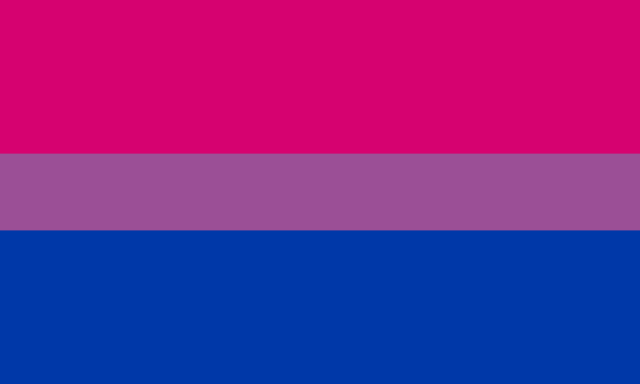Bisexuality
sexual and/or romantic attraction to people of more than one gender From Wikipedia, the free encyclopedia
Bisexuality is a sexual orientation. Bisexual (sometimes shortened to bi) people are romantically or sexually attracted to both men and women.[1][2] It can also mean attraction to more than one gender.[3] A third meaning can be an attraction to the same gender and another gender.[4] Sometimes it is talked about as having romantic or sexual attraction to someone regardless of their sex or gender identity. This is also known as pansexuality.[5][1] Some bisexual people love men and women the same and some people love one more than the other. Some bisexual people have preferences to one or more sexes, however some may not.[6] A slang expression for bisexuality is "to swing both ways."

In 1948, Alfred Kinsey published the Kinsey scale. The Kinsey scale shows that sexuality is a continuum. This means it moves little by little from heterosexuality to homosexuality. On the Kinsey scale, a 0 is someone who is only heterosexual. A 6 is someone who is only homosexual. Someone who is equally homosexual and heterosexual (bisexual) is a 3.
In biology, bisexual can define an organism that has both male and female organs. This mostly refers to plants.
Definitions
Bisexuality is romantic or sexual attraction to both males and females,[7][8][9] or to more than one gender.[10] Attraction can be different for bisexuals. This can be sexual, romantic, emotional, or physical attraction.[11] Some sources say that bisexuality means romantic or sexual attraction to all gender identities or sexual orientations. Some sources say that it is romantic or sexual attraction to a person no matter what that person's sex or gender is. This would make it the same as pansexuality.[12][13] Pansexuality ignores or rejects the gender binary (the idea that there is two genders and related sexual orientations).[14] This is because pansexuals are open to relationships with people who do not identify as men or women.[15][16] Sometimes the phrase bisexual umbrella or bisexual community is used to talk about any non-monosexual behaviors, attractions, and identities.[17] The phrase "bisexual community", or the word "plurisexuality",[18] includes people who identify as bisexual, pansexual, omnisexual, biromantic, polysexual, or sexually fluid.[19][20]
Symbols
A common symbol of the bisexual community is the bisexual flag. This flag has a deep pink stripe at the top for homosexuality, a dark blue stripe for heterosexuality, and a purple stripe in the middle for bisexuality.[21] The purple stripe is a mix of the blue and pink colors, representing a mix of homosexuality and heterosexuality.
Another symbol of bisexuality is the biangles. The biangles are a pair of overlapping pink and blue triangles. These triangles form purple where they cross.
- The bisexual pride flag
- Bisexual infinity symbol
- The biangles
- Gender symbols
- Double crescent moons
Related pages
References
Further reading
Wikiwand - on
Seamless Wikipedia browsing. On steroids.




